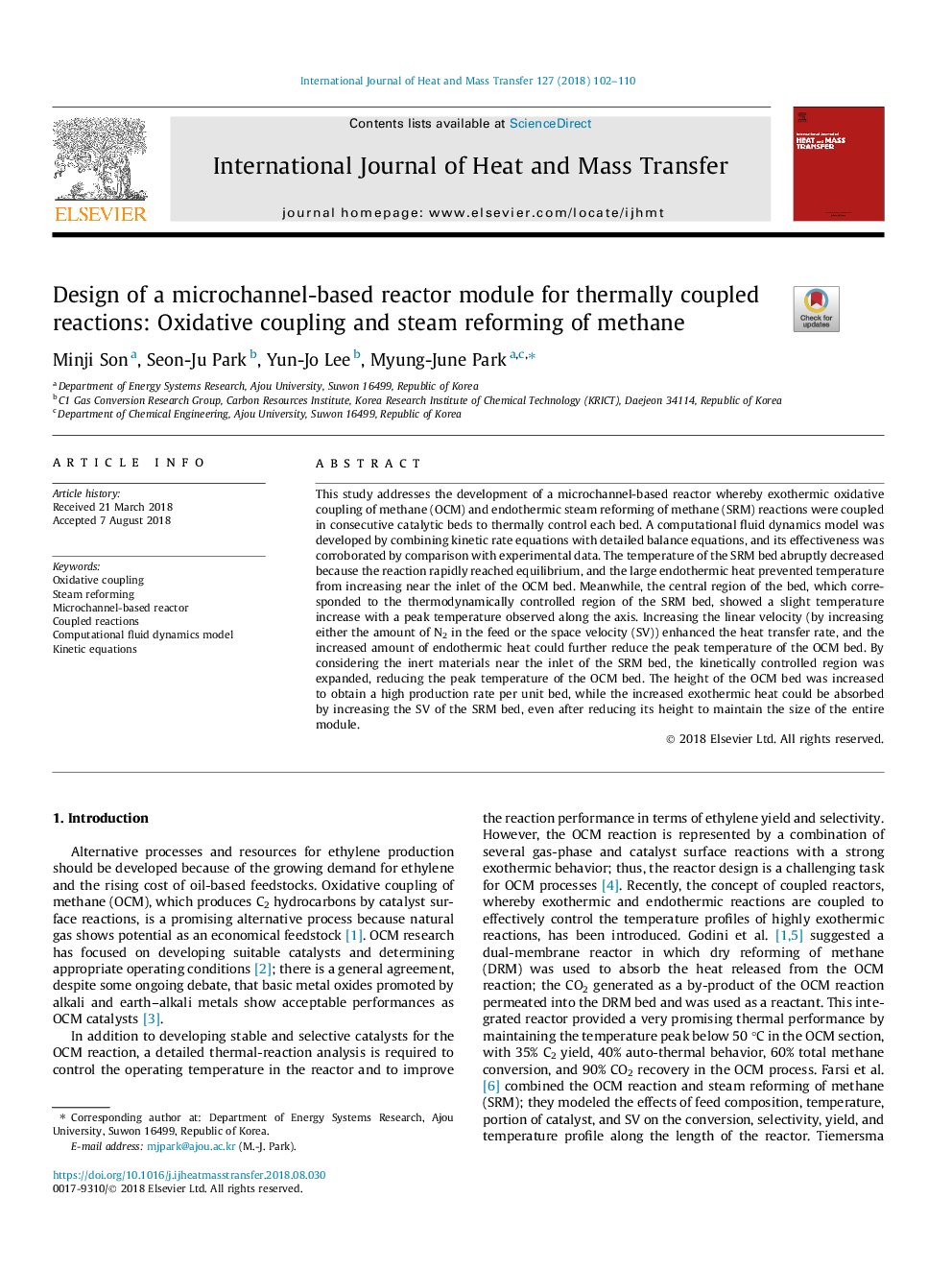| Article ID | Journal | Published Year | Pages | File Type |
|---|---|---|---|---|
| 8941954 | International Journal of Heat and Mass Transfer | 2018 | 9 Pages |
Abstract
This study addresses the development of a microchannel-based reactor whereby exothermic oxidative coupling of methane (OCM) and endothermic steam reforming of methane (SRM) reactions were coupled in consecutive catalytic beds to thermally control each bed. A computational fluid dynamics model was developed by combining kinetic rate equations with detailed balance equations, and its effectiveness was corroborated by comparison with experimental data. The temperature of the SRM bed abruptly decreased because the reaction rapidly reached equilibrium, and the large endothermic heat prevented temperature from increasing near the inlet of the OCM bed. Meanwhile, the central region of the bed, which corresponded to the thermodynamically controlled region of the SRM bed, showed a slight temperature increase with a peak temperature observed along the axis. Increasing the linear velocity (by increasing either the amount of N2 in the feed or the space velocity (SV)) enhanced the heat transfer rate, and the increased amount of endothermic heat could further reduce the peak temperature of the OCM bed. By considering the inert materials near the inlet of the SRM bed, the kinetically controlled region was expanded, reducing the peak temperature of the OCM bed. The height of the OCM bed was increased to obtain a high production rate per unit bed, while the increased exothermic heat could be absorbed by increasing the SV of the SRM bed, even after reducing its height to maintain the size of the entire module.
Keywords
Related Topics
Physical Sciences and Engineering
Chemical Engineering
Fluid Flow and Transfer Processes
Authors
Minji Son, Seon-Ju Park, Yun-Jo Lee, Myung-June Park,
